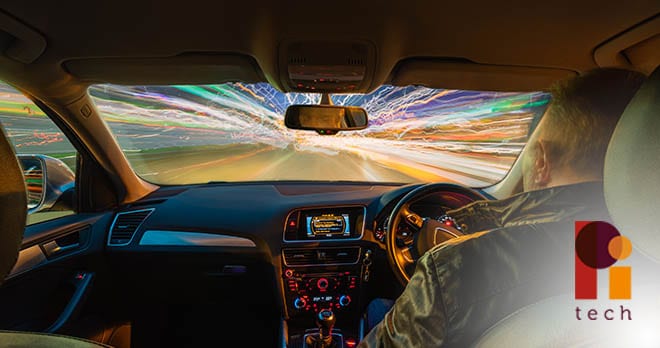The Automated and Electric Vehicles Act 2018 – six months on, is it fit for purpose?

There are already vehicles on our roads with automatic safety measures such as self-parking, lane assist and emergency braking. These would once have been considered something out of a science fiction novel or film, but technology is rapidly evolving and motor insurance and legislation needs to catch up fast.
With this in mind, in July 2018 the new Automated and Electric Vehicles Act 2018 came into force. Vehicle owners/drivers and motor insurers now have a statutory liability for any damage caused by an automated vehicle when being operated in driverless mode, but in turn those owners/drivers and insurers may be able to recover damages from the manufacturer if the technology is found to be at fault.
What does the Act change?
Prior to the Act, motor insurance covered human drivers but there was potential for an owner/driver or insurer to avoid being liable if the vehicle was not under the immediate control of the driver at the time of the accident. Those suffering damage or injury would be left with the more complex Consumer Protection Act to negotiate if they wished to make a claim.
This new legislation gives people a potential route to compensation, if they have suffered damage by automated vehicles, through insurance rather than via a product liability claim against a manufacturer. This is not only available to third parties injured by the automated vehicle, but also to the automated vehicle’s driver if injured themselves (providing they are not in control at the time of the accident and have effectively become a passenger).
How liability will be apportioned remains to be seen, and will no doubt depend on the level of automation in each particular vehicle.
Amendments will be needed to the current Road Traffic Act 1988 to extend compulsory third party insurance, and the Secretary of State will be providing a list of automated vehicles which will be covered by the Act. What isn’t included in the new Act is any legal duty on manufacturers, such as ensuring safety-critical software is implemented.
Is the law keeping pace?
As reported recently, trials of fully driverless cars on the UK’s public roads are expected by the end of 2019, with the Government’s aim being for them to be operational by 2021. There have been previous trials in major UK cities over the last four years, with a Code of Practice published in 2015 (which will need updating to impose greater safety standards). Of concern (or not, depending on how much you embrace or have faith in new technology) is that our Government plans to scrap the requirement that a dedicated safety driver is in the vehicle in these new trials. It begs the question, is the technology really up to the job yet? If this new batch of test vehicles are truly driverless, and the tests aren’t in controlled areas, what safety measures will there be to give the public confidence that a contingency plan is in place should something go wrong?
Whilst the Act has some welcome additional legislation regarding electric vehicles, in relation to automated vehicles it is currently limited to fully-automated vehicles only, and more thought needs to be given to ensure cover is in place whether a person is driving the vehicle, or they have legitimately handed over partial or full control to a semi-automated vehicle. There are a few areas that are unclear, for example:
- Cover can be voided if a driver failed to update safety-critical software, however if there is a fleet of vehicles who is responsible for the update? If the insurer escapes cover, who is liable? The individual driver?
- What happens with semi-autonomous vehicles that aren’t to be used on public roads? For example, agricultural machinery?
What’s been happening since the introduction of the Act
A review of the legal framework is currently being conducted by the Centre for Connected and Automated Vehicles (CCAV), with assistance from the Law Commission. This includes use of automation in public transport as well as in private vehicles, and not only covers automated vehicles but also driver assistance technology e.g. cruise control. The three year project runs from March 2018, and intends to address safety issues prior to vehicles coming on the market, ongoing monitoring and maintenance once those vehicles are in use, criminal and civil liability, and adapting road rules.
Testing is also being undertaken on autonomous vehicles by Oxbotica, an Oxford-based artificial intelligence company, thanks to funding from both Innovate UK and the CCAV. A small fleet of vehicles will be tested in Oxford and London, using advanced software including vehicle sensors and data exchange, so the vehicles should not only recognise their environment but react to it and make instant decisions once obstacles are detected, much as competent human drivers are expected to do. It has been likened in media reports to the autonomous vehicles having a brain.
In November last year, Government ministers advanced ambitious plans for autonomous public transport. Self-driving taxis are due for parts of London following trials, and it is proposed that self-driving single-deck buses will be running a route in Scotland by 2021.
Also in November, the European Council gave their support to the European Commission’s proposed package of mandatory minimum vehicle standards, which includes new driver assistance technology, e.g. Advanced Emergency Braking (AEB), Intelligent Speed Assistance (ISA), drowsiness detection, event data recorders etc. Many of these would be mandatory for all new cars, with specific safety rules applying to automated vehicles to address current and future safety risks, e.g. automated vehicles interacting with non-automated vehicles, the increased impact on pedestrians and cyclists, etc.
What does the future hold?
It has to be said that amongst the key factors in favour of driverless vehicles is reducing driver or human error, and avoiding those uniquely human characteristics such as tiredness, distraction, and influence of alcohol or other substances – and these are of course very welcome. However, as with any new technology, different risks may be created.
There have been a flurry of reported incidents in the US and UK involving autonomous vehicles, or semi-autonomous vehicles in “autopilot” mode, where people have sometimes been injured or killed. So it remains to be seen if incidents increase alongside the inevitable increase of fully automated, semi-automated and electric vehicles on our roads.
Fully autonomous vehicles are the way forward, and technology is advancing in leaps and bounds, but the safety issues have to be addressed. There are many who don’t expect fully automated vehicles to be with us until at least the next decade, but others predict we will be seeing vehicles without steering wheels by at 2025. Either way, the science fiction is now fast becoming fact.
Technology has the power to change the way we view personal injury.
